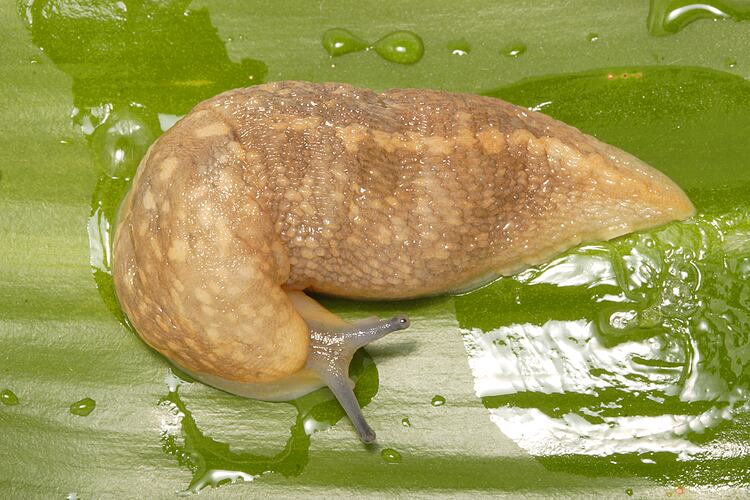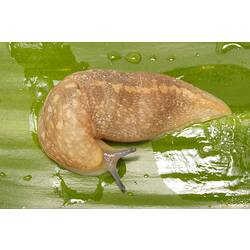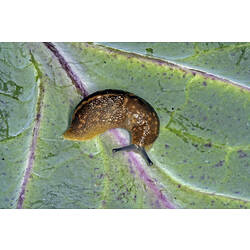General Description
Colour pale white-yellow or orange-green, with grey-green spots. Foot pale yellow. Up to 10 cm long.
Biology
Great Yellow Slugs produce a thick, yellow mucus which they glide along by contracting the muscles on the underside of their foot. Great Yellow Slugs fed mostly on fungi and plant material and can be a minor garden pest in some areas. Their eggs are 5-6 mm in size, lemon-shaped and are laid in clutches of up to around 30 eggs, from which up to 140 slugs can hatch. They were introduced from Europe, and first recorded in Australia in 1852.
Distribution
Europe, North America, New Zealand. Eastern mainland Australia and Tasmania.
Habitat
Damp places with decaying vegetation, urban areas including kitchens.
More Information
-
Animal Type
-
Animal SubType
-
Brief Id
Orange-green to white-yellow, foot yellow.
-
Colours
Grey, Green, Yellow
-
Habitats
-
Diet
Herbivore
-
Endemicity
-
Conservation Statuses
CITES: Not listed, FFG Threatened List: Not listed, EPBC Act 1999: Not listed, IUCN Red List: Least Concern
-
Taxon Name
-
Scientific Author
(Linnaeus, 1758)
-
Common Name
Great Yellow Slug
-
Other Names
Yellow Cellar Slug
-
Phylum
-
Subphylum
-
Class
-
Subclass
-
Order
-
Suborder
-
Infraorder
-
Superfamily
-
Family
-
Genus
-
Species Name
flavus



